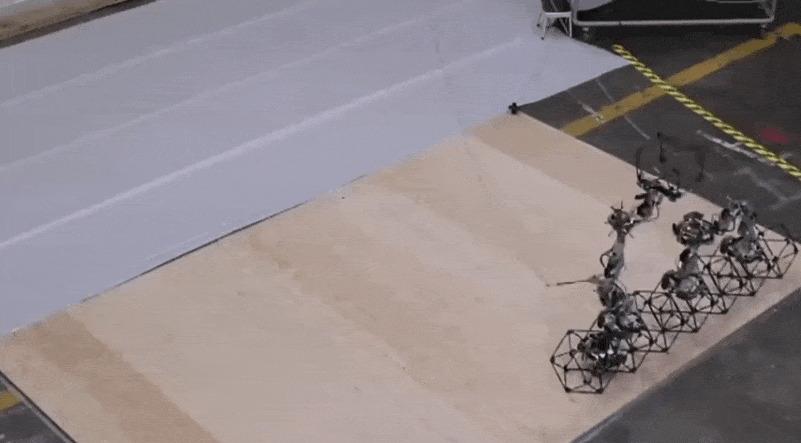If you have plans to relocate to the moon or Mars, finding suitable housing might pose a challenge. Luckily, NASA is already planning for the future and has introduced a self-assembling robotic structure that could be essential for our off-planet endeavors.
A recent publication in Science Robotics by NASA Ames Research Center introduces the concept of “self-reprogrammable mechanical metamaterials.” These materials enable the construction of buildings that have the ability to assemble themselves. The acronym given to this technology is ARMADAS, which stands for Automated Reconfigurable Mission Adaptive Digital Assembly Systems.
According to Christine Gregg, the lead author, this construction technology has numerous practical uses. Its robust autonomy and lightweight structures are especially beneficial in challenging environments such as the moon or space. It can be employed for constructing communication towers, shelters, booms, and antennas on the lunar surface and in orbit, which are crucial prior to the arrival of astronauts.
The self-building structure uses cuboctahedral frames called voxels and two types of robots to assemble them. One robot walks on the surface with two legs, carrying a voxel like a backpack. Another robot in the frame tightens the attachment points. They don’t need a strong sensing system and don’t require high precision.
In many pictures in this post, there are two walkers and a fastener worm. A transport walker is seen passing a voxel to a placement walker, while the fastener bot waits below to secure the frame.

The pieces have a unique shape that allows them to be connected at various angles, ensuring strong structural integrity. Although it’s not ideal to store rocks on top of a dome made from these pieces, they are perfect for creating a solid base to add insulation and sealant, making them suitable for building a dwelling.
As per Gregg’s observation, the pieces could also be assembled on-site. He explained that the voxels could be produced using a variety of materials and manufacturing processes. In the future, their aim is to use materials found on the moon or other planets to make the voxels for space-related purposes. Although the videos of robots working are sped up, speed is not a priority when it comes to constructing things in space or on the surface of another planet.
According to Cheung, the robots possess the ability to work at a higher speed than what is demonstrated in this paper. Nevertheless, we did not prioritize this aspect as it was not crucial to our primary goals. To enhance the speed of the system, the solution lies in deploying more robots. The overall strategy for scalability, in terms of speed and size, involves leveraging algorithms for planning, scheduling, fault detection, and repairs.
Within a timeframe of 4.2 days, the lab’s robots successfully transformed 256 voxels into a structurally sound shelter.This is what it looked like in the beginning (far from real time).

By sending them to Mars or the moon a year in advance, they could construct twelve structures twice the size before the crew’s arrival. Another possibility is to add the necessary plating later and seal it up, which is a topic not covered in the current paper but could be explored in the future. The robots in this lab have power cords attached to them, but they are also being designed to run on batteries or on-site power. The fastener bot already runs on batteries, and the researchers are thinking of ways to keep the walkers charged while they are working.
Gregg proposed the idea of robots being able to recharge autonomously at power stations or wirelessly. He also brought up the concept of using the structure itself to transmit power for both the structure and the robots.

Various robot models have already been used in space and microgravity, demonstrating their versatility. They could also be utilized in non-Earth gravities such as the moon’s. However, this is just the beginning, with more potential and concept illustrations to be showcased.
Gregg mentioned that the upcoming robots in the lab will be quicker and more dependable, thanks to the improvements made from the initial versions. They are keen on exploring ways to incorporate various building blocks for better functionality.
Similarly, research will be ongoing on structures built using groups of robots, not just a few; a simple shelter might take two robots four days, but something ten times bigger could take 100 times longer. Many hands, especially robotic ones, make work easier.




